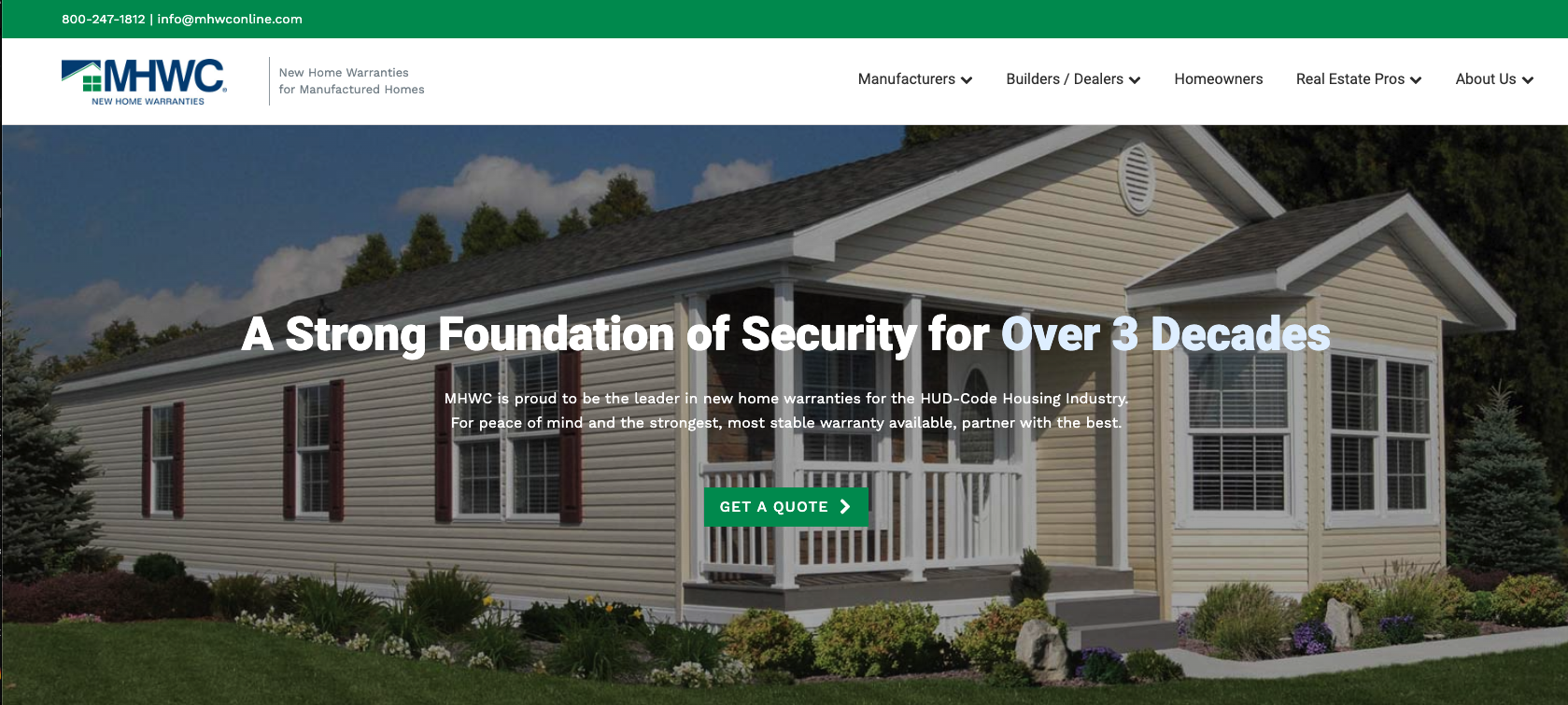The days of supply chain shortages may be in the rearview mirror, but a new challenge now plagues the construction industry - an increasing lack of skilled construction labor. To meet market demand, the construction industry needs approximately 723,000 new workers each year. The number of open construction sector jobs currently averages between 300,000 to 400,000 every month.
Home Builders Care, the charitable arm of the Home Builders Association of Central Arizona, recently opened the Home Building Academy in Phoenix. Here students participate in a nine-week, rapid worker training, resulting in industry-recognized certificates in either carpentry or electrical work. The academy is tuition-free for qualified students, and students maintaining “satisfactory” academic progress will receive a weekly stipend for living expenses. Successful graduates will also receive a set of tools, boots, work clothes, and personal protective equipment.
 But is simply providing the avenue of study enough of a draw to the next generation of potential contractors? To answer that question, one must understand the mindset and motivations of the Millennial and Gen Z generations. They are digital natives who grew up with the internet and technology and are used to constant stimulation and fast-paced living. They also value work-life balance, diversity, and flexibility in the workplace, and seek to make a social impact through work. They expect employers to care about their well-being. Diversity, equity, and inclusion (DEI) are important. To attract and retain the next generation of workers, companies must take steps to adapt their workplaces and recruiting practices to meet these needs and values.
But is simply providing the avenue of study enough of a draw to the next generation of potential contractors? To answer that question, one must understand the mindset and motivations of the Millennial and Gen Z generations. They are digital natives who grew up with the internet and technology and are used to constant stimulation and fast-paced living. They also value work-life balance, diversity, and flexibility in the workplace, and seek to make a social impact through work. They expect employers to care about their well-being. Diversity, equity, and inclusion (DEI) are important. To attract and retain the next generation of workers, companies must take steps to adapt their workplaces and recruiting practices to meet these needs and values.
A company’s brand and reputation can be just as important as its salary or benefits. While a company can have a fantastic reputation with clients, it’s irrelevant if young workers don’t have the same perception. If they feel like it’s not keeping up with modern trends or providing them with the opportunity to make an impact, they may be less inclined to work there. To overcome this barrier, companies must take a proactive approach to build a positive market reputation and brand. This may involve volunteer projects, community partnerships, social media presence, or other marketing initiatives highlighting the company’s values and commitment to progress.
Young workers are drawn to companies that have transparent, inclusive cultures where employees feel valued and respected. One way to create this type of workplace is by investing in opportunities for professional development. For example, offering classes on topics like leadership and management, communication, digital technologies, or DEI. Allowing workers to develop their own ideas and solutions can also help foster a sense of belonging, ownership, and engagement in company culture.
Today’s young workers also seek companies that can provide career growth and development opportunities. They need to know that their job is important to the company’s success and that they’re not just a number. Offer mentorship, growth, and development opportunities such as hiring or promoting individuals with knowledge and expertise in a certain area, pairing young workers with more experienced employees, or offering training workshops to improve their skills and help them advance in their careers.
And, let’s face it, money is always a huge motivating factor. No one is looking to work for free, and if compensation or benefits packages don’t meet expectations, employees are quick to leave. At a minimum, to attract a young construction crew, a company should be offering competitive base salaries and benefits packages. This may include things like health insurance, paid time off, and retirement plans. Disability and life insurance and other perks, such as gym memberships, health and wellness programs, or free lunches, are another way to set a company apart.
Millennials and Gen Zers are tech-savvy and expect construction companies to be as up-to-date and innovative when it comes to technology, just as they are in other industries. The construction industry is often slow-paced when it comes to adopting new technologies, but if they want to attract and retain the best young talent, they need to start investing in technology that will help them stay competitive.
Then there is the actual hiring process - most construction companies rely only on traditional recruitment methods, such as job boards or recruiting agencies. But the reality is that only a fraction of available talent will appear on these lists - and they may not be the best candidates for a company. To attract and retain young workers, a more proactive approach needs to be taken. Build relationships with local universities and colleges, offer internships, co-op programs, or attend job fairs. Use social media platforms like LinkedIn, Twitter, Facebook, or Instagram to engage with potential candidates and share information about company culture and opportunities. Host recruitment events or offer internship programs to connect with young workers and give them a chance to see what working in construction is like.
Attracting and retaining construction workers has never been easy. But by focusing on the needs and preferences of younger workers, investing in a company’s culture and workplace environment, and actively reaching out to potential employees helps the industry build a strong team of young talent that will help an organization thrive for years to come.
The Kevin Costner film, Field of Dreams, is a favorite movie of sports fans, and of baseball fans, in particular. Based on W. P. Kinsella’s novel, Shoeless Joe, the movie follows the struggles of an Iowa farmer, Ray Kinsella, who tries desperately to wring enough money from his farm to keep the lenders who hold the mortgage on it at bay. He begins to hear a voice saying, “If you build it, he will come.” He wonders if the voice is a dream, a symptom of a psychological problem, or the deliverer of an important message to him.
 Ray’s wife Annie, played admirably in the movie by Amy Madigan, wonders, too. She listens to her husband describe the voice and the other messages it conveys: “Ease his pain”; and “Go the distance”. Then Ray sees a baseball field in the middle of his corn and an apparition of the long-dead Shoeless Joe Jackson, who was a great player from the early twentieth century and who was his father’s favorite player, standing in the middle of the imaginary baseball diamond. He feels called to construct the field, and despite her concerns about her family’s security and her worries that they may soon lose their farm to creditors, Annie accedes to his plan to build the ball field.
Ray’s wife Annie, played admirably in the movie by Amy Madigan, wonders, too. She listens to her husband describe the voice and the other messages it conveys: “Ease his pain”; and “Go the distance”. Then Ray sees a baseball field in the middle of his corn and an apparition of the long-dead Shoeless Joe Jackson, who was a great player from the early twentieth century and who was his father’s favorite player, standing in the middle of the imaginary baseball diamond. He feels called to construct the field, and despite her concerns about her family’s security and her worries that they may soon lose their farm to creditors, Annie accedes to his plan to build the ball field.
Shoeless Joe and his teammates, who were banned from baseball for fixing the 1919 World Series, begin showing up and playing on Ray’s field. They seem to enjoy themselves, but Ray has trouble understanding how he fits into the picture. At a school board meeting, Annie argues against a group of parents who seek to ban books from the school’s library, particularly the books of Terrence Mann, who is a favorite author of her husband’s and hers. Ray then remembers a reference in one of Mann’s books to a baseball player named Kinsella and takes this as a sign that Terrence Mann might have the answer to what Shoeless Joe, the voices, and the field might mean for Ray Kinsella.
Costner’s character travels across the country to Boston and brings Terrence Mann, played wonderfully by the great James Earl Jones, back to his farm. Ray is still unclear about what is in it for him, but Shoeless Joe provides the answer. As the players are wrapping up their game and heading back into the cornfield where they magically disappear each night, he says to Ray, “If you build it, he will come”, and he nods toward a catcher who is removing his gear and staying behind. As Shoeless Joe disappears into the corn, Ray realizes it is the spirit of his father.
Later, still worried about the fate of his family and farm, Ray looks to Terrence Mann for assurance. Mann explains that the field will be an attraction that people will pay to see, and in the best lines of the movie, Mann assures him that, “People will come, Ray. People will most definitely come.” The movie ends with a scene of a road full of cars driving up to the Kinsellas’ cornfield that has become a field of dreams.
But why are we recounting this movie to you? First, it’s a great movie, one of our favorites. If you haven’t seen it, you should. If it’s been a while since you saw it, we recommend that you watch it again. This time, though, think about the voice, and what that iconic line, which we paraphrase here, might mean to your building business.
If you build it, they will come. “They” means your future customers, and the “it” is not a cornfield in Iowa. In this context the “it” is the kind of home your future customers are looking to buy.
It’s easy to get in a rut and stay with a product that has been successful in the past, even after that product is no longer as popular as it once was. The auto industry has experienced this with some regularity. Large cars with big fins were replaced by sportier models with big engines that eventually were replaced by aerodynamic fuel-efficient vehicles. Station wagons gave way to vans that gave way to SUVs, and gas guzzlers are being replaced by hybrids and electric cars. Nearly every industry goes through this, and the homebuilding industry is no exception.
Today’s new home buyers are different from the ones twenty, ten or even five years ago. The Covid pandemic has caused some of the open floor plans of recent years to give way to more private spaces in houses to allow for home offices and quiet places for students to attend class remotely. The new generation of homebuyers (under the age of forty) are placing added emphasis on patios and see the kitchen island, with its ability to serve the multiple purposes of additional workspace, a makeshift breakfast bar, and added storage, as more of a necessity.
Affordability is even more important to today’s new home buyers. In September 2023, the annual median new home price dropped by the largest amount since 2009, with most homes selling in the $150,000 to $499,999 range. Following a stretch of high inflation and with interest rates hovering near a twenty year high, many prospective new home buyers cannot afford to pay as much for a house as they might have paid two or three years ago.
To have more success and to gain an edge on your competition, it is a good idea to study what prospective buyers in your market want and then deliver that product at a price those prospects can afford to pay. If you do that, the people will come. They will most definitely come. And they will buy your houses.
Another way to gain an edge on your competition and to give your homebuyers and you peace of mind is to place an RWC warranty on every home you sell. When you do that, you can be confident that your homebuyers are in good hands and that any construction defect claims they have will be handled with the utmost care and professionalism.
In our more than four decades of home warranty experience RWC has covered more than four million homes. We offer a wide variety of warranty options like our standard ten-year warranty, our Day 1 coverage warranty, our extended appliance and system warranties, and our specialty warranties for remodeling projects, detached garages, and commercial construction. Only RWC has developed and offers its members a customized state warranty that mirrors each state’s statute of repose and accommodates other state specific issues. All RWC warranties provide clear performance standards that help create realistic homeowner expectations and provide a road map to resolving even the stickiest customer complaints.
At RWC, every guarantee our warranties make is backed by Western Pacific Mutual Insurance Company, RRG. Western Pacific has an A- rating from A. M. Best and only insures home warranty and similar new home construction risks, like builders’ general liability, which can be offered through the RWC Insurance Advantage program to RWC members. No other warranty company has an insurer with this kind of strength solely dedicated to covering builders and their homes.
Here’s hoping you continue to dream big and that you choose to go the distance with RWC by your side. Have a great winter!
On November 19th, the Formula One Grand Prix World Championship took over the streets of Las Vegas. Before we know it, we will be exiting 2023 and racing toward the end of the year. With that in mind, now may be a good time to glance in the rearview and reflect on this past year in preparation for 2024.
Warning lights glowing on the dashboard can signify that it is time for maintenance. Our businesses, however, do not have cut and dry notification systems. This makes it very easy to forget the importance of regular tune-ups. Add in the fluidity of changes in the real estate industry and without warning you could easily end up spinning out.
Brainstorming new ideas can start with simple questions. Has your company seen an increase or decrease in the number of homes being built? What are your competitors spotlighting in their marketing? What sets your company apart from the pack?
If it has been several years since you performed this type of check-up, you are not outside of the norm. Unless something very clearly veers off course, we can inadvertently miss areas of opportunity or forget the importance of reviewing marketability.
Market fluctuations, inflation, and recession talks have fueled changes in every facet of our industry. These economic barriers have, in some cases, led to an increase in insurance rates and brought about a resurgence of unique marketing strategies. Idling in the comfort zone of day-to-day ‘business as usual’ could potentially prevent you from propelling forward.![]()
There are numerous ways in which RWC Warranty can help determine if things are running efficiently, starting with a general overview to confirm your company is getting the most out of our partnership. Here are a few examples of how we can help:
- Provide a comparison insurance quote.
- Set up extended appliance coverage.
- Confirm you have the most up-to-date marketing materials.
- Review what programs or rewards options may fit your structure better.
- Train your team on our products and the function of the warranty.
Our goal, as your warranty service provider, is to offer solutions which help your business consistently run efficiently. Consider your local Account Executive to be a part of your personal pit crew here to get you back on track.
As always, we look forward to working with you and your team. Our biggest compliment is your positive feedback and referrals. A special thank you to those that leave a kind word on our Google reviews. No time like the present... click here to rate or review RWC.
 The 2023 National Sales Meeting, held in Harrisburg, PA, October 24-26, brought forth a blend of emotions as we welcomed new faces, felt the absence of some big personalities, and embarked on a journey to accomplish some major achievements.
The 2023 National Sales Meeting, held in Harrisburg, PA, October 24-26, brought forth a blend of emotions as we welcomed new faces, felt the absence of some big personalities, and embarked on a journey to accomplish some major achievements.
At the 11th hour we got the unfortunate news that we would be without fellow colleagues Fred Taylor and Jana Watts for the weeklong rally. They were sorely missed personally and professionally, as two of our most prolific and confident “conversation starters.” Some new faces included Crystal Jackson from the Midwest, Tiaira Satchell covering the northern mid-Atlantic region, and Logan Canby as our new New Jersey Account Executive.
The other elephant in the room was the absence of our long-time leader and recent retiree, Sue Palkovic. Sue’s fingerprints were all over this meeting as most of the leg work putting it together came from her and Assistant Manager, Jody Lehman. Many thanks to both for shaping it up.
The first day of the meeting kicked off with 30 minutes of where we came from, where we are now, and where we’re going with President/Owner, George Parmer. Richard Swartz, Executive VP and Chief Counsel was up next to share his words of wisdom and encouragement. Additional managers who delivered presentations and lead brainstorming sessions included those from the IT Department, Insurance, and Marketing.
We also formally announced the results of our annual sales competition with Staci Cool taking first place and Fred Taylor grabbing second. Additional certificates of merit were awarded as well.
The 2nd annual Round Robin Session took place the next day at the corporate office. Account Executives were teamed up and conducted visits to the Membership, Enrollments, and Warranty Resolution Departments to gain insights into current developments and to refresh their knowledge of daily operations. The third and final morning started off with discussions of our Key Estates Extended Warranty Product. The afternoon allowed management to rejoin the sales team for a comprehensive review of the Round Robin sessions. The conversation proved to be productive and forward thinking. Such opportunities for the Account Executives to interact and brainstorm with the staff at the corporate headquarters are priceless. It creates a chemistry and camaraderie that is enviably portrayed in our business practices with our members and their homeowners.
Ambition was high heading into the meeting. We’ve put a lot on our plate for 2024. There’s one way to get there. In the words of Rich Swartz (quoting his track and field coach) - “Run as hard as you can for as long as you can.” and that's exactly what we plan to do.
 Optimism. It was a favorite theme of our parents when they told us to hold our heads high and keep our chins up. We heard it from coaches and teachers who suggested that we should look on the bright side of things. “Count your blessings” is advice often heard from friends and counselors. Optimism is a recurring element in books, movies, and music. If we try hard enough, we can almost hear Louis Armstrong urging us to “Grab your coat, grab your hat, leave your worries on the doorstep. Just direct your feet to the sunny side of the street.”
Optimism. It was a favorite theme of our parents when they told us to hold our heads high and keep our chins up. We heard it from coaches and teachers who suggested that we should look on the bright side of things. “Count your blessings” is advice often heard from friends and counselors. Optimism is a recurring element in books, movies, and music. If we try hard enough, we can almost hear Louis Armstrong urging us to “Grab your coat, grab your hat, leave your worries on the doorstep. Just direct your feet to the sunny side of the street.”
Optimism has been described as hopefulness and confidence about the future or about the successful outcome of something. Most of us have lived long enough to know that an optimistic path filled with hope feels much better than a pessimistic one characterized by a sense of dread or despair. Medical and psychological research suggests that there are tangible and even provable positive effects when we live our lives optimistically.
Optimists feel healthier. If we tend to believe that life will work out in our favor, we are more likely to rate our sense of well-being and health higher. Optimists have a lower incidence of cardiovascular disease and better cholesterol numbers and are generally healthier. Optimists live longer, and their immune systems are stronger. They tend to have better relationships with others, they enjoy their work more, and they are less prone to stress.
Being an optimist makes emotional, medical, and psychological sense. Sometimes, however, troubling circumstances can make even the most happy-go-lucky person worry, and doubt can creep in causing us to become, well, pessimistic. In these days of the twenty-four-hour news cycle and with the explosion of social media, it seems that, everywhere you look, someone is dying to tell you how bad things are and how worse they are going to get.
This constant drumbeat of negativity can affect people in all walks of life, and builders are not immune from the stories that affect us all. Some stories, however, hit closer to home with builders. Labor shortages and supply chain problems have lingered after the pandemic and still have not been resolved. War in Europe has spooked financial markets and wreaked havoc on the price of oil. Inflation and the resultant hike in interest rates have made some homebuyers skittish and have driven some out of the market altogether.
When we think about these circumstances, we could hang our heads or mope around. But it is important, even in times like these, to be optimistic and to consider the words of Benjamin Franklin who wrote, “While we may not be able to control all that happens to us, we can control what happens inside us.” That is, we can choose to keep our chins up, count our blessings and look on the bright side of things. We control what happens inside us by staying optimistic, and in that way, we continue to enjoy life and reap the benefits that optimism brings.
Not letting these kinds of problems affect our mood or our outlook on life is healthy, but thinking positively about the future will not make the problems go away. What is an optimist to do in these circumstances? The great British statesman Winston Churchill answered this question when he wrote: “The pessimist sees difficulty in every opportunity. The optimist sees opportunity in every difficulty.”
Rather than wringing his hands over a tough economy, the optimist looks for whatever opportunities these difficult times present. If we are not as busy building houses, we can identify our best workers and subcontractors and do those things necessary to keep them in the fold. We can also cull those who are problematic, who are not team players, or who do not fit into our long-term plans. We can analyze the market and check to see if the designs we offer our customers are consistent with current trends. We can sharpen our pencils and decrease expenses by finding the best value in building supplies and by looking for more efficient ways to build our homes. By seeing these opportunities in our present difficulties, the optimistic builder can make his company stronger and come roaring out of these doldrums at the helm of a better and more profitable company.
Making money from the work that goes into creating a business and running it well is good, but keeping those hard-earned dollars is even better. We believe one of the best ways for you to protect your bottom line and to hold on to more of your profits is to place an RWC warranty on every home you sell. After closing on a home, you can get on with building the next one, confident that your homebuyers are in good hands and that any construction defect claims they have will be handled with the utmost care and professionalism.
In our more than four decades of home warranty experience, RWC has covered more than four million homes. We offer a wide variety of warranty options, like our standard ten-year warranty, our Day 1 coverage warranty, our extended appliance and system warranties, and our specialty warranties for remodeling projects, detached garages, and commercial construction. Only RWC has developed and offers its members a customized state warranty that mirrors each state’s statute of repose and accommodates other state-specific issues. All RWC warranties provide clear performance standards that help create realistic homeowner expectations and provide a road map to resolving even the stickiest customer complaints.
At RWC, every guarantee our warranties make is backed by Western Pacific Mutual Insurance Company, RRG. Western Pacific has an A- rating from A.M. Best and only insures home warranty and similar new home construction risks, like builders’ general liability, which can be offered through the RWC Insurance Advantage program to RWC members. No other warranty company has an insurer with this kind of strength solely dedicated to covering builders and their homes.
We are optimists here at RWC, and we know life is better on the bright side. Here’s hoping your homeowners and you join us there!
Have a great Summer!
MHWC, RWC's sister organization providing manufactured home warranties to HUD-Code Manufacturers and Builder/Dealers, is excited to announce the launch of their newly redesigned website.
The streamlined menu is easy to navigate and the modern layout lends itself to a faster and better user experience. Have a look! Maybe you'll discover something new about the MHWC warranty. Our current and prospective members will find detailed info about our warranty products, instructions on how to become a member, resources for existing members, tradeshow schedules, FAQ, and can even contact us through one of the convenient online forms.
Hypothetical situation. Let's say you've been contracted to build a custom home by someone who was referred to you by a satisfied customer. This individual owns the land and is financing the project out of his own pocket. You are the general contractor with complete authority over the entire project. The single family home you're building is a typical design and requires nothing out of the ordinary. Construction proceeds without a hitch. Then, with the house about 80% complete, fire breaks out in the basement on a Sunday night. The fire department determines a homeless person had decided to camp out in the unsecured structure and started a small fire to keep warm. Of course, it quickly got out of control and now more than $200,000 in materials have literally gone up in smoke.
 Your customer thought you were responsible for buying Builders Risk coverage as the general contractor. You were sure they had agreed to purchase a policy as the owner of the project. The written contract makes the general contractor, you, responsible for "all insurance." So you lose that argument. As someone who knew what they were talking about once observed, insurance isn't important until you need it. In trying to figure out what went wrong, you conclude that you have had to finance most of your projects in the past. That meant getting a construction loan from a bank. They won't lend a dime without proof of builders risk. In this case, there was no loan officer to dot all the i's and cross all the t's. Life is in the details.
Your customer thought you were responsible for buying Builders Risk coverage as the general contractor. You were sure they had agreed to purchase a policy as the owner of the project. The written contract makes the general contractor, you, responsible for "all insurance." So you lose that argument. As someone who knew what they were talking about once observed, insurance isn't important until you need it. In trying to figure out what went wrong, you conclude that you have had to finance most of your projects in the past. That meant getting a construction loan from a bank. They won't lend a dime without proof of builders risk. In this case, there was no loan officer to dot all the i's and cross all the t's. Life is in the details.
Thankfully, this is only a hypothetical situation. Few professional builders would make such a mistake...right? Don't take chances. The RWC Insurance Advantage offers Builders Risk coverage almost anywhere in the United States for virtually any size residential construction project through Zurich - number one in Builders Risk insurance.
For more info or to get a quick quote:
www.rwcinsuranceadvantage.com
866-454-2155
A home is one of the biggest investments a person will ever make and in order to keep that home glowing and increasing in value, a well-maintained property should be the goal for years to come. Of course, a warranty will provide protection, but seasonal maintenance by the homeowner is also key to long-lasting digs. As a professional in the industry, you’ve seen first-hand what irresponsibility will do to a residence. It’s imperative to remind your buyers that even though a home may be brand spanking new, regular maintenance is absolutely necessary to ensure safety, comfort, and retain resale value.
It’s easy to preach to a homebuyer about keeping up with seasonal tasks and send them on their merry way, but why not arm them with a comprehensive list of things they should be aware of? Steer them toward RWC's "season maintenance checklist" under the Homeowner's tab. This is a great tool for homeowners to stay on top of things. Furthermore, you as the builder must have gathered hundreds of maintenance tips during your career. Offer up those tips and hints as you meet with your clients throughout the home building journey.
Just for fun, here is a home maintenance quiz that will test your know-how. While this quiz does not address every conventional home maintenance project, it does provide helpful tips that may have been overlooked.
1. How often do forced-air furnace filters need to be changed?
At least every three months during the heating season.
2. What part of the faucet usually needs to be replaced when you have a water leak?
The washer.
3. Should you run hot or cold water through your garbage disposal?
Cold water.
4. How often should the moving parts of garage doors be oiled?
Every three months.
5. What tools can you use to unclog your drains?
A plunger and a plumber’s snake.
6. What tool can be used to unclog a toilet?
Coil spring-steel auger.
7. What faucet part needs to be cleaned every three to four months?
Aerator — the screen inside the end of the faucet.
8. What can you use for traction on icy sidewalks, steps, and driveways?
Cat litter or sand — never use salt because it damages the pavement.
9. Where should the fire in your fireplace be built?
On the irons or grate, never on the fireplace floor.
10. What will prevent soot and add color to the fire in your fireplace?
Throw in a handful of salt.
11. Where should your firewood be stored?
Outside, away from your house and not directly on the ground.
12. What helps keep unpainted concrete floors easy to keep clean?
Concrete Sealer.
13. What should you use to clean unpainted concrete floors?
A solution of 4 to 6 tablespoons of washing soda in a gallon of hot water. Mix scouring powder to the solution for tough jobs.
14. Why should frozen pipes be thawed slowly?
Frozen pipes should be thawed slowly to prevent the formation of steam, which could cause the pipe to burst.
15. How often should your roof be inspected?
A qualified roofer should inspect your roof every three years.
16. What should be regularly checked on your security system?
The alarms and circuit breakers should be checked to make sure they are in working order and the sensors should be inspected one by one.
17. At what temperature should your water heater be set?
120 degrees Fahrenheit
18. How often do skylights need to be inspected?
Skylights should be inspected each time your roof is inspected so leaks don’t develop from cracks and interruptions around its seals, caulking and flashings.
19. What can you use to help a window slide easily?
Rub the channel with a piece of paraffin.
20. What should you look for when you inspect your siding yearly?
Determine if wood-sided homes need to be repainted; check to see if the caulking around the windows and doors has split and cracked, and replace the caulk; clean the mildew; trim shrubbery away so it does not touch the siding.
(Quiz provided by NAHB.org)
 You know homebuyers. They always have lots of questions. And not only just for you but they want to know about the products you used in their home. Below are many of the questions we get on a regular basis about the warranty you are providing with the homes you build. We just thought you should know in case any of these questions come up in your own conversations with your customers. If you need more information, don’t hesitate to give us a call.
You know homebuyers. They always have lots of questions. And not only just for you but they want to know about the products you used in their home. Below are many of the questions we get on a regular basis about the warranty you are providing with the homes you build. We just thought you should know in case any of these questions come up in your own conversations with your customers. If you need more information, don’t hesitate to give us a call.
What is the value of an RWC warranty to my homebuyers?
- An RWC warranty provides insured, written coverage on various items for a specific period of time.
- Third party assistance to resolve customer service issues is available under all of our programs.
- Homeowners receive a clearly written warranty document spelling out exactly what is and is not covered.
- The resale value of your buyer’s home is increased when our warranty is transferred to the next owner.
- Homeowners have assurance that assistance is available if a covered item is defective.
- Builders wishing to use RWC or an Affiliate’s warranty must demonstrate technical competence, financial stability and ethical business dealings with their customers. Knowing that your builder is a member of one of our programs is assurance that these standards have been met or exceeded.
- The average cost to repair a structural failure exceeds $30,000. Having a warranty in place means that covered structural components will be repaired without causing you or your homeowner serious financial hardship.
- There is a greater likelihood of a major structural defect developing in a home than there is a fire which causes major damage. Homeowners probably have insurance to protect against fire damage. Why not be protected from structural failures as well?
What exactly is covered under my warranty?
RWC and Affiliates have over 75 different warranty options. So the answer to this question depends on which warranty was placed on the home. Coverage varies depending on the program selected by the Builder and the state in which the home is located. Refer to the warranty book received at closing for exact coverage and warranty terms.
How does a homeowner start the claims process?
The specific procedures to address a potential defect in a home are spelled out in the warranty book. The homeowner must send written documentation either by email to RWC at warranty.resolution@rwcwarranty.com or via certified mail, return receipt requested in order to initiate this process. We do not accept telephone or fax requests at this time.
What are mediation and arbitration?
RWC knows that, in the majority of cases, the root of many disputes is the lack of communication between a builder and a homeowner. Sometimes, all it takes to get an issue resolved is someone to take on the role of mediator and assist the others in coming to a fair and reasonable agreement, based on the warranty standards provided. Prior to heading to formal arbitration or costly litigation, RWC does its best to mediate disputes between Members and Homeowners.
Arbitration is a formal process conducted by an independent, neutral arbitrator to resolve disputes between two or more parties. In the case of our warranty programs, RWC uses arbitrators experienced in arbitrating residential construction matters. Unless prohibited by law, the decision of the arbitrator under our programs is binding on all parties, including the homeowner as well as the builder.
Your buyer has questions about the paperwork received regarding their home’s enrollment (duplicate book, incorrect information on Application for Warranty, etc). How do they contact RWC?
For questions regarding the Application for Warranty Form or any other Enrollment Paperwork issue, the homeowner may contact our main office at 717-561-4480 or click here and fill out our information request form.
 The last couple decades have seen dramatic changes in the relationship between builders and their customers. A generation ago construction defect litigation rarely affected builders. In many jurisdictions, the old legal maxim caveat emptor, or “let the buyer beware”, applied to the sale of new homes. Twenty-first-century American society has turned that principle on its head. A more accurate watchword in these times is caveat builder or “let the builder beware” of litigious homeowners and plaintiffs' attorneys bent on making a lucrative monetary recovery in court for every perceived defect in every new home.
The last couple decades have seen dramatic changes in the relationship between builders and their customers. A generation ago construction defect litigation rarely affected builders. In many jurisdictions, the old legal maxim caveat emptor, or “let the buyer beware”, applied to the sale of new homes. Twenty-first-century American society has turned that principle on its head. A more accurate watchword in these times is caveat builder or “let the builder beware” of litigious homeowners and plaintiffs' attorneys bent on making a lucrative monetary recovery in court for every perceived defect in every new home.
Residential construction litigation has increased in frequency and expense dramatically in the past two decades and exponentially in the past few years. Homeowners recover hundreds of millions of dollars from builders every year, and a typical settlement of a condominium association claim is not measured in thousands of dollars, but in millions of dollars.
A recent study revealed that more than half of all homeowner claims are about actual work performed in the building of the house and not about design, materials or maintenance. These complaints can create logistical headaches for builders and can lead to litigation that is expensive and tends to distract builders from their primary focus of building and selling homes. Express home warranties reduce the work, anxiety, and expense of these kinds of claims by spelling out the rights and remedies of the parties and by providing for arbitration, a quick and relatively inexpensive method for resolving disputes.
Arbitration provisions in express warranties provide that mutually agreed upon, neutral arbitrators hear the evidence from the parties and determine, without passion or prejudice for either side, who owes what to whom. Because most arbitration services have streamlined procedures, and because there are no juries for whom the lawyers must “dramatize” the case, arbitrations often result in less expense and reduced animosity between the parties.
In today's world, there is no reason why builders or homeowners should beware of dealing with each other after the settlement on a new home. If a builder provides his customer with an express warranty administered by a neutral third party, such as a new home builder warranty by RWC, both the builder and the homeowner can enjoy peace of mind because they have a clear and written description of how the home should perform and a quick, fair, and inexpensive process for resolving any disputes that might arise. All of RWC's warranty programs include out effective warranty resolution process which includes mediation and, if needed, formal arbitration.
If you need information on the procedures and/or rates to enroll ALL your building projects (remodeling, commercial, detached garages, condominiums, townhomes, etc.) with RWC to provide yourself with the most warranty protection available, contact your Account Executive at 800-247-1812, Ext 2149.


